Discover 11 hidden attractions, cool sights, and unusual things to do in Taranto (Italy). Don't miss out on these must-see attractions: Taranto Cathedral, Temple of Poseidon, and Palazzo Pantaleo. Also, be sure to include Chiesa di San Domenico Maggiore in your itinerary.
Below, you can find the list of the most amazing places you should visit in Taranto (Apulia).
Table of Contents
Taranto Cathedral

Also known as: Cattedrale di San Cataldo
Cathedral in Taranto, Italy. Taranto Cathedral is a Roman Catholic cathedral in Taranto, Apulia, Italy, dedicated to Saint Catald. It is the archiepiscopal seat of the Archdiocese of Taranto.[1]
Temple of Poseidon
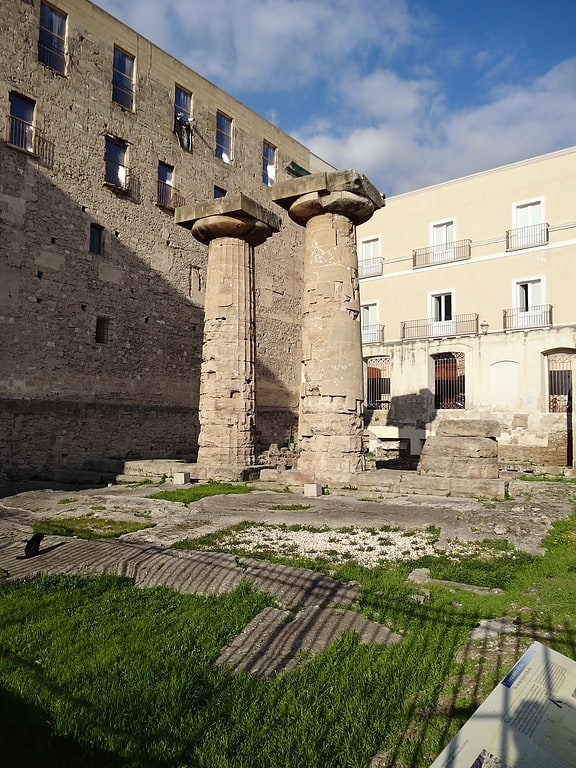
Also known as: Tempio di Poseidone
The Temple of Poseidon is a peripteral Doric temple located in the modern piazza Castello in the historic centre of Taranto, Italy. It is the oldest temple in Magna Graecia and the only Greek religious structure still visible in the old town of Taranto. The temple dates to the first quarter of the sixth century BC. It fell into ruin in the Middle Ages and parts of it were reused in the construction of other buildings.[2]
Address: Piazza Castello, 74123 Taranto
Palazzo Pantaleo

Taranto's Palazzo Pantaleo is an 18th-century building owned by the municipality. From 2000 to 2007 it housed some collections of the National Archaeological Museum of Taranto in the Old City. It is currently home to the Alfredo Majorano Ethnographic Museum.
It was built in 1770 by Baron Francesco Maria Pantaleo, who built a spacious and sumptuous aristocratic residence after demolishing some pre-existing structures purchased from the Chapter and Clergy of Taranto. The palace overlooks the Mar Grande, with the main entrance on the Pantaleo ramp after which it is named.
Thanks to its location on the Rada di Mar Grande, which leads toward the Ponte di Porta Napoli bridge, the baron could keep an eye on his lands and the embarkation of products on departing ships. The commission to build the palace on the natural cliff, was given to Francesco Saverio Miraglia for a fee of 3,150 silver ducats, agreeing to complete the work within the next two years. All the material obtainable from the palace to be demolished and all the carparo obtainable from the calcarenitic bench was used; only for the main door and the loggia above it was explicitly requested that first-quality carparo be used, to be quarried elsewhere and transported to the site.
The building presents a unified layout and lacks an inner courtyard. The main facade has a forepart and a wide portal, from which protrudes the rounded wrought-iron railing of the loggia above. Still visible on the ground floor are a vaulted hallway richly profiled adorning the crenellated tower and the lion of the family coat of arms, perfectly preserved stables, a coach house, and a large service room with an independent entrance on vico Civico.
On the middle floor, on the other hand, are the servants' apartments and the large kitchen with the original blue and white majolica tiles. A monumental double-ramp staircase leads to the first piano nobile, where one can admire the reception rooms with ceilings painted by Domenico Antonio Carella in 1773, depicting scenes from the Aeneid and Iliad. These works were paid for with 235 silver ducats plus grain, oil and cheese. Finally, through another staircase, one can reach the second floor, where there are more rooms with ceilings painted on paper attached to wooden ceilings.
Address: Rampa Pantaleo 6, 74123 Taranto
Chiesa di San Domenico Maggiore

The church of San Domenico is a Romanesque-Gothic style church standing on the western front of the historic center of Taranto, the construction of which was completed around 1360. The appellation "Major" by which it is identified in the only monograph published today on the complex is actually inaccurate, being known in the sources as the title given to the present Sanctuary of Our Lady of Health or Monteoliveto, during the period when the Dominicans moved there from the post-Napoleonic Restoration to 1866.
Address: Via Duomo 1, 74123 Taranto
Ponte Punta Penna Pizzone
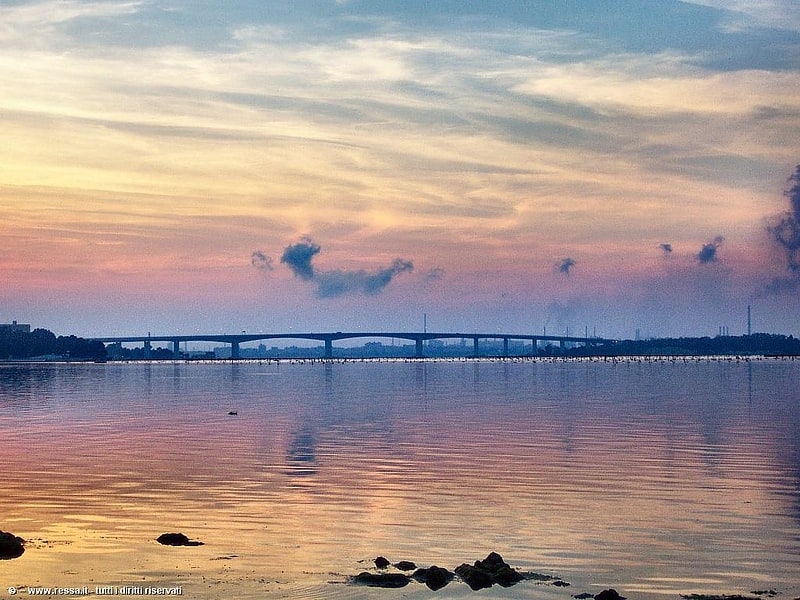
Girder bridge in Italy. Ponte Punta Penna Pizzone also known as Ponte Aldo Moro is a Girder bridge that spans Mar Piccolo in Taranto. The total length of the bridge is 1,909 m. In 1978 it was named in honor of assassinated italian politician Aldo Moro.[3]
Castello Aragonese
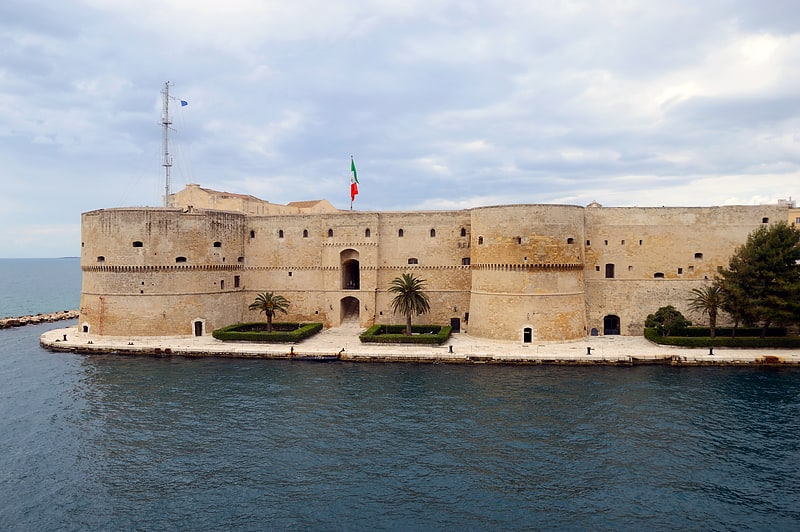
Castle in Taranto, Italy. The Castello Aragonese is a fortification in Taranto, Italy. Officially called the Castel San Angelo, it was built on the site of older fortifications dating to Greek occupation in the third and fourth centuries BC. In 1481 the low ground in front of the fortification site was excavated to allow the passage of boats, and to create a moated defensive position. The present fortress was built for the then-king of Naples, Ferdinand II of Aragon in 1496 to reinforce the naturally low-lying link between the old town of Taranto on a peninsula, and the mainland. The seven-towered design is attributed to Francesco di Giorgio Martini of Siena. The fortress repelled an Ottoman attack in 1594, but it quickly lost its military significance with the advent of artillery. It was converted to an artillery platform and many interior spaces were filled in to provide a stable base for the guns. In 1707 under the Habsburgs it was converted to a prison however during the Napoleonic period it reverted to its original function as a military fortress. French generals Thomas-Alexandre Dumas and Jean-Baptiste Felix de Manscourt du Rozoy were the most illustrious prisoners of the castle having been taken prisoner in 1799 by the pro-Bourbon Sanfedismi when their damaged ship sought refuge at Taranto Harbour. At the time, Taranto was part of the Kingdom of Naples.
In 1883 the San Angelo tower was demolished to allow construction of the Ponte Girevole, and two others were removed to allow the widening of the canal. Since 1883 the fort has been occupied by the Italian Navy. Beginning in 2003 the Navy began restoration and archeological work on the site, removing plasterwork and investigating fortification work dating back to the Byzantine era. The fort is open for tours.[4]
Address: Piazza Castello, 70123 Taranto
Concattedrale Gran Madre di Dio
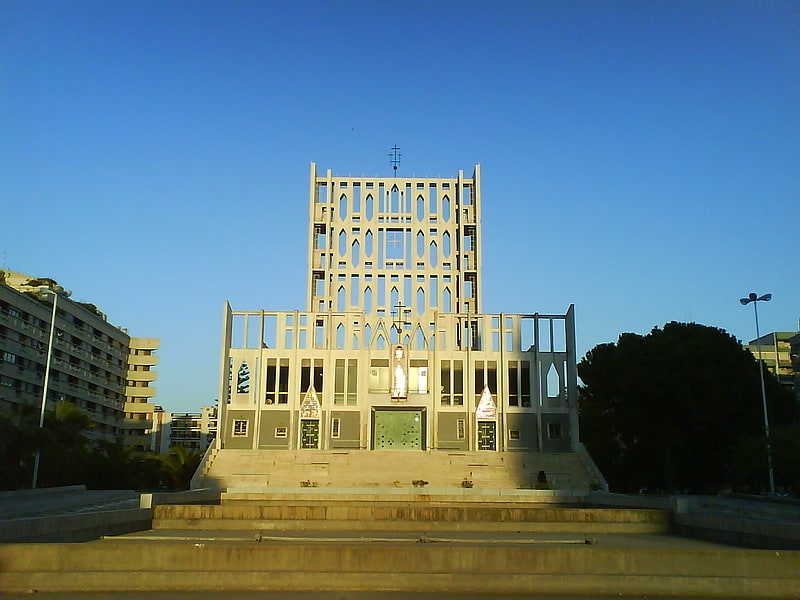
The Co-Cathedral Great Mother of God is a church in Taranto, opened in 1970 in the city's Borgo Nuovo.
Ponte Girevole
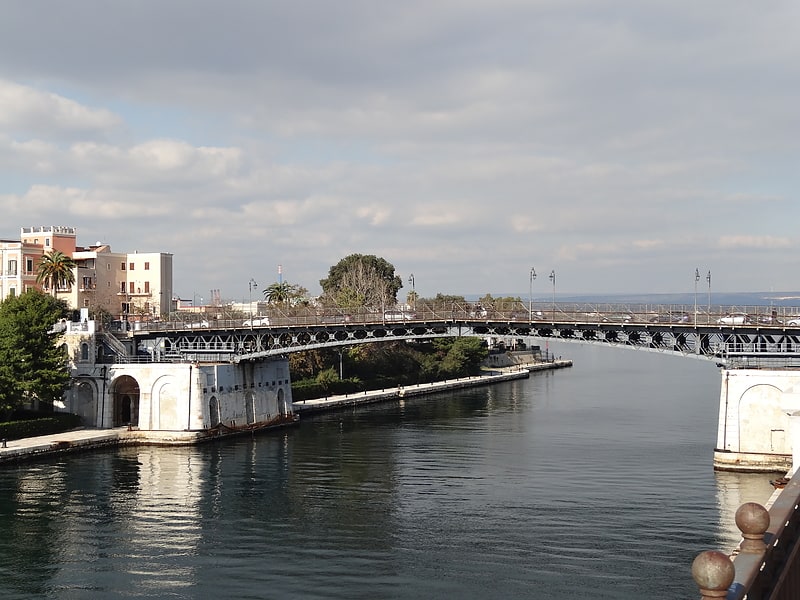
Also known as: Ponte di San Francesco di Paola
Swing bridge in Italy. The Ponte Girevole is a swing bridge in Taranto, Italy, spanning the navigation canal between Taranto's Mar Grande and the Mar Piccolo. The bridge connects Borgo Antico island to the Borgo Nuovo peninsula. The canal was excavated in 1481 as part of the defenses of Taranto. A steel and wood bridge was first built across the canal in 1886. The present steel bridge was built in 1958. Officially titled the Ponte di San Francesco di Paola, the bridge has two swing spans that pivot near the banks of the canal to meet in the middle of the canal. When open, the halves are parallel to the embankment, leaving the width of the canal clear for passage. The bridge is a Taranto landmark.
The canal is 400 metres (1,300 ft) long and 73 metres (240 ft) wide. The first bridge was hydraulically operated using water stored in the Castello Aragonese. The 1958 replacement was designed by the National Society of Savigliano and built in the former Tosi shipyard in Taranto. It was inaugurated on 10 March 1958 by Italian president Giovanni Gronchi. The new bridge is electrically operated from control stations on each embankment. The sequence of operation requires the Old Town span to open to 45 degrees first, then the New Town span opens 90 degrees, and finally the Old Town span opens to its full 90 degrees.[5]
Address: Ponte Girevole, 74100 Taranto
Museo Nazionale Archeologico
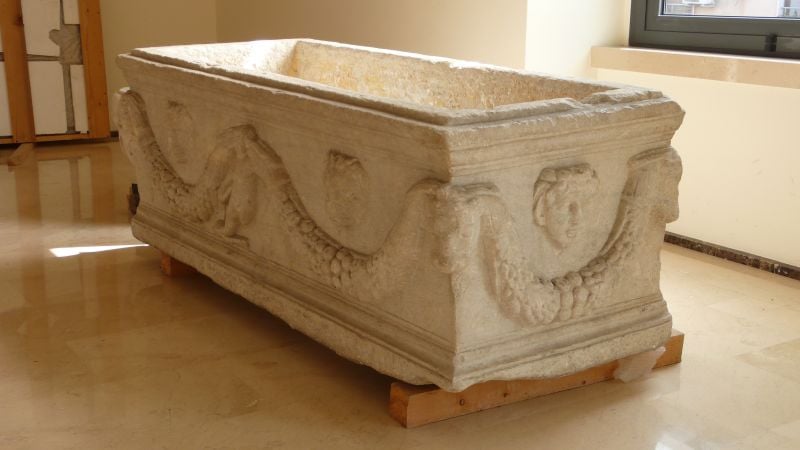
History museum, Museum
Address: Via Camillo Benso Conte di Cavour 10, 74123 Taranto
St. Augustine Church
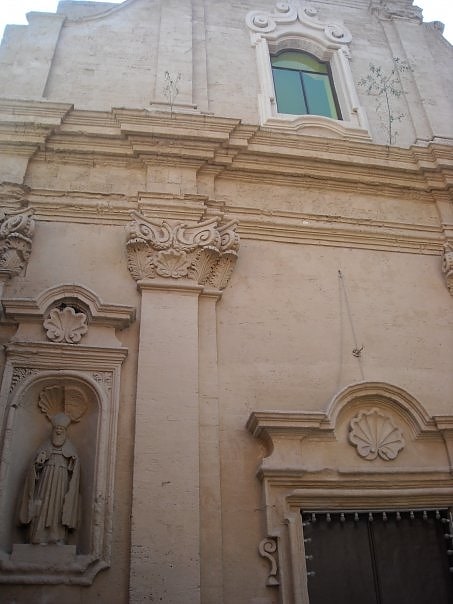
Also known as: Chiesa di Sant'Agostino
Located in the small Sant'Agostino alley near the La Riccia slope, the church of Sant'Agostino has an 18th-century facade with a very simple structure, recalling the Rococo style.
Two pilasters surmounted punctuate the façade, in the first order by composite capitals and in the second order by Ionic capitals ruined by time. It is not easy to reconstruct the history and date of construction of this complex because of the paucity of documents that have come down to us, however, it is presumed to have been built around 1402, the date of settlement of the Augustinian fathers in Taranto.
The interior, with a single nave, has a rectangular presbytery separated from the nave by a triumphal arch; the walls are punctuated by composite pilasters surmounted by a very prominent cornice above which there are five large windows on each side; the ceiling, flat, was rebuilt after damage sustained during World War II; a plaque at the entrance commemorates the reopening of the church after 29 years of closure, in 1956, by Monsignor Bernardi.
The inner hall has three chapels on each side. The first on the right, now dedicated to St. Anthony of Padua as the seat that housed the Royal Confraternity of St. Anthony of Padua from 1809 to 2009, was once dedicated to St. Mary of Grace. The second chapel features a beautiful crucifix of the Spirant Christ and was built by the Calò family.
The third chapel housed the statue of Our Lady of Peace, titular of the confraternity of the same name.
On the opposite side are other chapels. The first is dedicated to St. Nicholas of Tolentino where the Confraternity of St. Nicholas of Tolentino and Sacred Belt functions, but which in the past was dedicated to Our Lady of the Belt, and finally there is the altar of suffrage or the Sacred Heart of Jesus where there is a splendid work in Lecce papier-mâché by Guacci depicting Jesus and the souls in Purgatory.
The church has the honor of hosting the burial of Thomas Nicholas Aquinas.
The facility can only be visited on Sunday mornings, when it opens for church services.
On July 1, 2010, the Metropolitan Archbishop of Taranto, Archbishop Luigi Benigno Papa, by decree appointing a new Rector, wanted to reopen St. Augustine's Church while maintaining its status as a Rectory. With the appointment of the new Rector, Fr. Désiré Mpanda Kazadi, the church reopened on August 28, 2010, the day of the liturgical memory of St. Augustine.
Port of Taranto

Also known as: Porto di Taranto
The Port of Taranto is a port serving Taranto, southeastern Italy. One of the first in Italy for goods traffic, it is located on the northern coast of the gulf and plays an important role commercially and strategically. It has three entrances, two of which are operational. Its management is entrusted to the Port Authority, which is based within the port. Since 2011 the container terminal has been run by the Taranto Container Terminal SpA, which is 60% owned by Hutchison Whampoa and 40% owned by Evergreen Marine Corporation.[6]